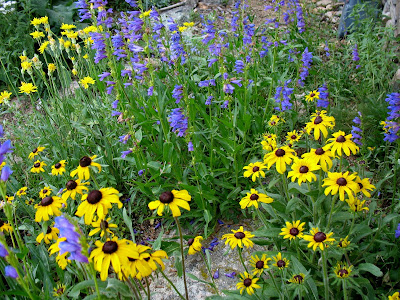Let Nature Feed Animals!
By Barbara Sanders, Routt County Master Gardener
How lovely to see these large elk in our yards! Is the deep snow preventing them from eating? What can we do to keep them alive? The supplemental feeding of deer, elk, and moose is a popular activity in many parts of our state. There are several reasons to resist the temptation.
First, under Colorado law, intentionally feeding big game animals is illegal. The prohibition applies to deer, elk, antelope, mountain goats, bighorn sheep, mountain lions and bears. Violators face a $50 fine.
Second, when the animals congregate for the easily available food, disease transmission through close contact and stress is increased. Perhaps foremost in our part of the state is chronic wasting disease in elk. Deer and elk can contact Enterotoxemia which results from the consumption of food that is too rich, such as corn, for the animals’ stomach, or rumen, creating bloating, diarrhea, and possibly death. They can spread diseases such as rabies, Lyme disease, Rocky Mountain Spotted Fever and other tick-borne diseases as well as parasites from their intestines (worms). These all can be spread to humans and pets
Third, luring these animals into your yard tempts them stay there and not migrate to the areas where there is natural food. The yard feeding creates an easy food source therefore if stopped, the animals will starve. Animals naturally spread out when they browse, letting the forest regenerate.
An additional reason against feeding is that attracting predator animals (lions and bears) to our neighborhoods is dangerous for children and pets.
 |
| Moose in backyard |
Big game animals depend entirely on native vegetation, such as grasses, forbs and shrubs. Those plants provide all the nutritional requirements the animals need to survive in Colorado, even through the winter. There are few plants that occur on their range that they will not eat in certain areas under certain conditions. In winter they eat grasses when they can obtain them. However, when the snow becomes deep, they readily eat twigs of woody species, even the conifers like Douglas fir. They also consume shrub and tree twigs and leaves. To attract deer, moose and elk, plant tree and shrub species which provide them with a winter source of food and cover.
Some suggestions are:
- Gambel Oak (Quercus gambelii) - Very important to wildlife. Acorns are very (possibly most) important wildlife food, especially in winter. Almost 100 wildlife species use oak; quail, turkey, deer, bear, and squirrels are especially avid acorn eaters; several species of upland and songbirds utilize for food and cover. Excellent wildlife cover
- Lodgepole (Pinus contorta) - Pines are nearly as important as oaks. All parts of tree are used and/or eaten. Pine seeds are especially important for food.
- Aspen (Populus tremuloides)
- Saskatoon Serviceberry (Amelanchier alnifolia)
- Native Plum (Prunus Americana)
- Native Willow Mix (Salix spp.)
- Buck Bush (Ceanothus fendleri)
- Woods Rose (Rosa woodsii)
The Colorado State Forest Service has a tree program for farmers, ranchers, and rural landowners of 2 or more acres for purchasing seedling trees. It can be reached at (970) 879-3225 or online at
www.colostate.edu/Depts/CSFS (and go to the “Nursery”).
Keep our animals and forests safe and healthy!
Barbara Sanders, Colorado Master Gardener since 1998.
































